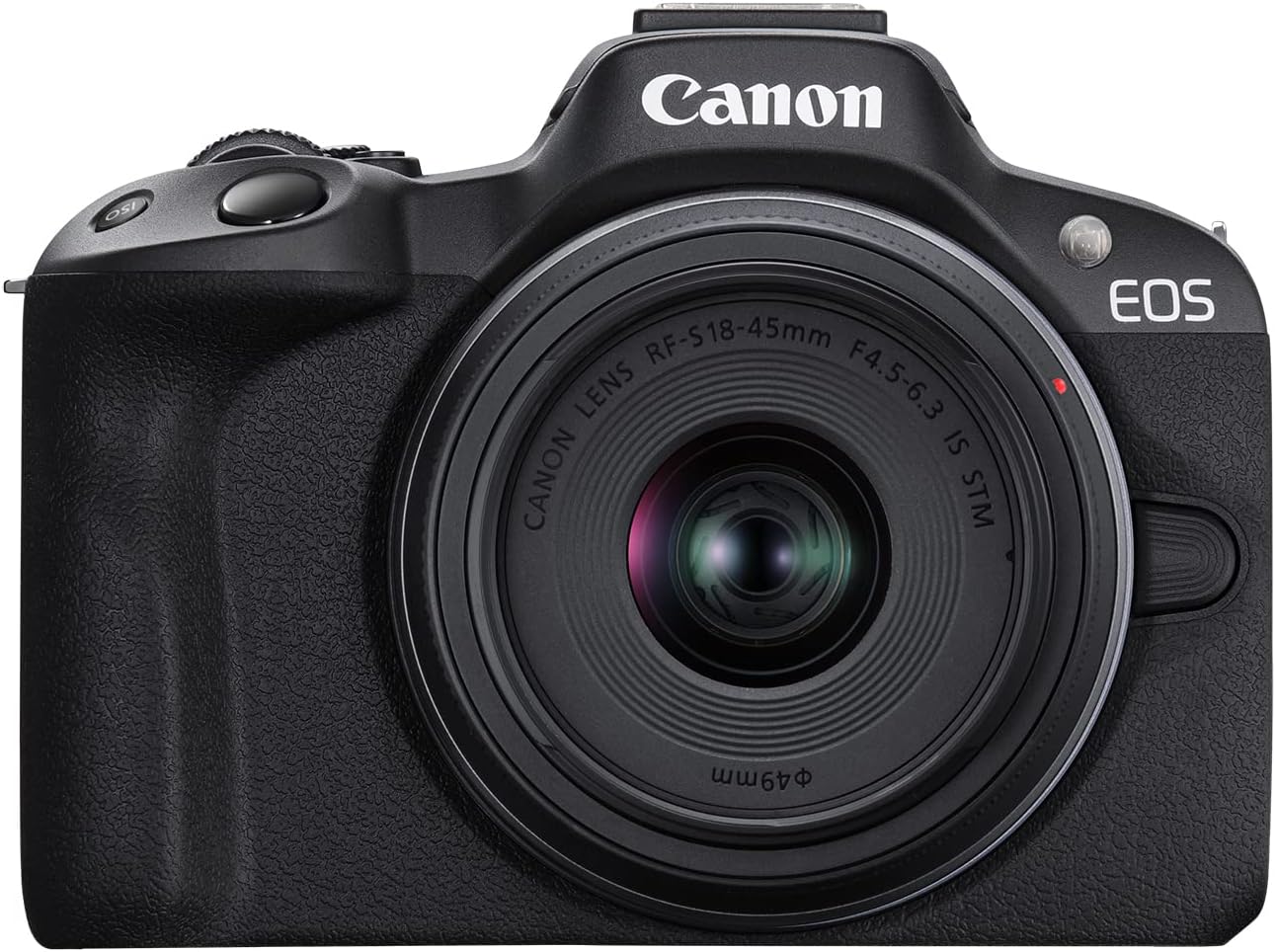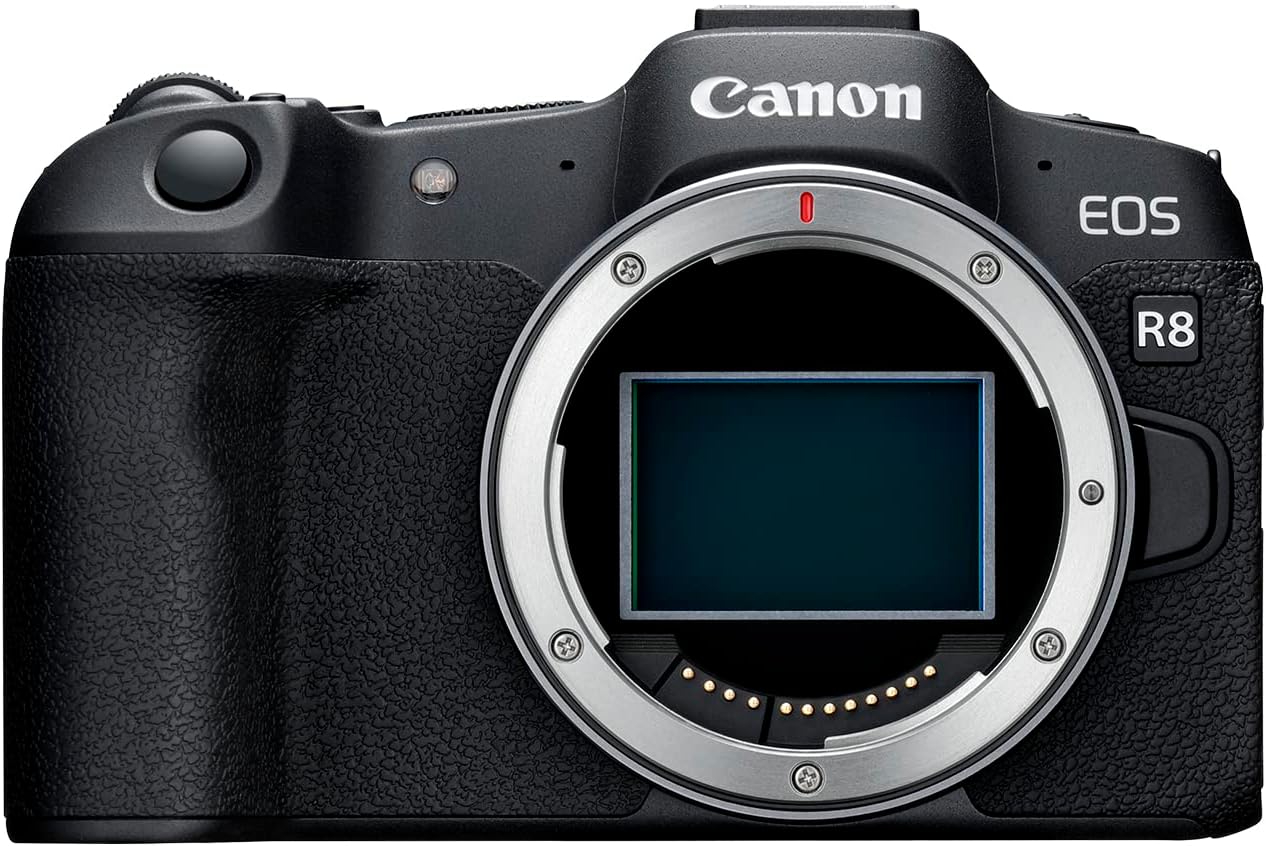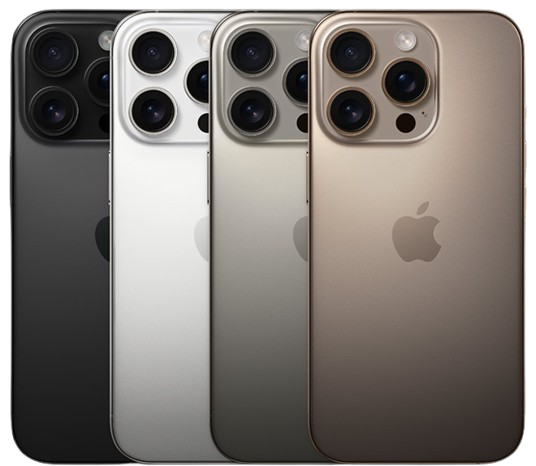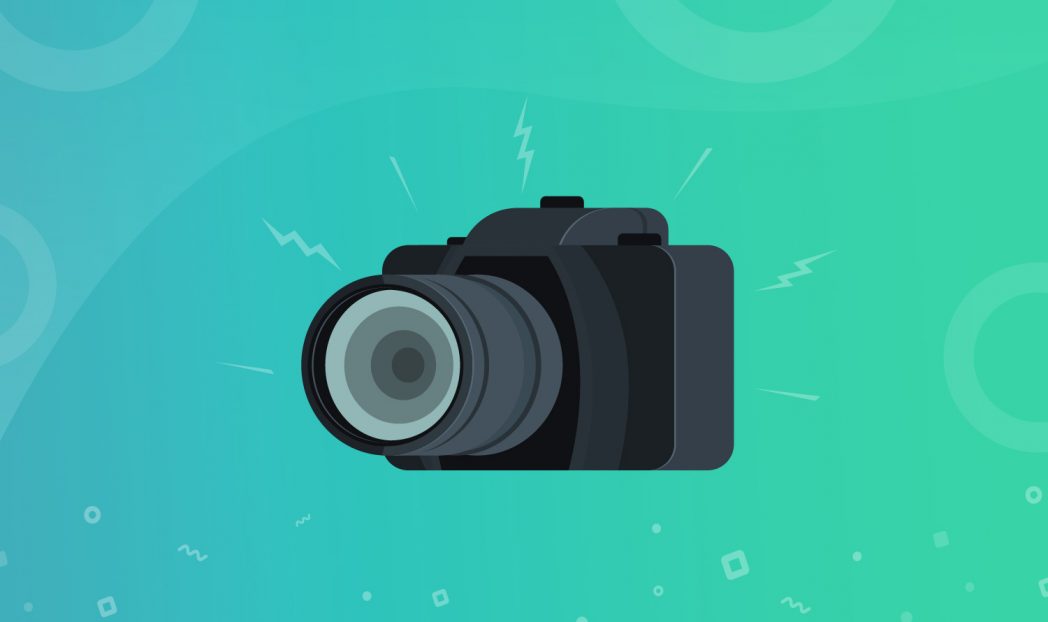Our team at Simple Booth is passionate about photography and all the details that go into capturing great portrait images. From our combined years of experience in the space, we’ve learned exactly which cameras work best for photo booths and which simply don’t.
And in this article, we’ll help you find the best camera for your photo booth.
Now, to everyone who wants to either create a professional photo booth company, entertain guests at your next live event, or use a photo booth to market your business, here are the five best cameras for your photo booth—categorized.
- Best Overall Camera For Photo Booths
- Most Affordable Camera For Photo Booths
- Highest Quality Camera For Photo Booths
- Best Smartphone Camera For Photo Booths
- Plus: A Guide to Photo Booth Autofocus
But before we dive into these, allow us to introduce an all-in-one solution…
All-in-one: Simple Booth HALO®
For companies, marketers, and professional event planners.
Simple Booth HALO is the ultimate all-in-one solution for your photo booth needs.
Built from the ground up with simplicity in mind, it’s a good-looking, premium photo booth that comes with all the bells and whistles:
- a sturdy travel case,
- a plug-and-play cable setup
- an iPad with digital photo booth software,
- a LED ring light with a brightness of 2170 lumens,
- a C-stand that is more stable than an ordinary tripod.
If you want to bring more awareness to your business or live events, then Simple Booth HALO is the perfect solution for you.
Your guests will interact with the built-in iPad and see themselves before taking a photo—just like in traditional enclosed photo booths.
But unlike traditional photo booths, HALO will send the image to your guests’ phones so they can post it directly on their social media profiles (with your logo included!), spreading awareness for your company.
HALO Construction
HALO is mounted on a C-stand, making it extremely sturdy. As such, there is no worry about people knocking it over—even on the most crowded nights.
The setup can be assembled entirely without tools in under 5 minutes—making Simple Booth HALO the perfect travel companion.
HALO is also a turnkey product that comes with a dedicated app, which your guests can use with ease and without supervision. It’s a proven photo booth solution that comes with every possible photo booth functionality you could possibly wish for:
- Adding your logo on customizable templates? Check ✅
- Sending images by email, text message, QR code, and AirDrop? Check ✅
- Live galleries with posting to social media and Instagram? Check ✅
It also provides all the fun photo features:
- custom layouts, animated GIFs, Rebounds, and videos
- filters and effects that guests can edit
- a large library of themes and props
- overlay graphics
- drawing option and much more
HALO was designed to make photo booth issues a thing of the past. We wanted to reduce the complexity of having multiple components and cables in photo booths.
That’s why HALO has a built-in iPad—so you don’t have to worry about choosing the right camera at all. That results in:
- a quick setup,
- less maintenance,
- a smooth live view,
- fewer points of failure,
- no incompatibility problems,
- no need to bring backup equipment.
If you’re looking for a ready-to-go, simple, and extremely effective photo booth that doesn’t break the bank… give Simple Booth HALO a try.
Best Cameras For Photo Booths
If you’re IT-savvy, experienced in photography, or want to build your own photo booth and select the right camera for your photo booth enclosure, this section is for you.
We’ve picked 4 cameras that are best suited for your various photo booth needs. But since you also need lights, a stand, and a tablet with appropriate software to handle the photo processing and sharing, we also included a bonus guide at the end to give you a head-start.
Sponsored links: We’ve included Amazon Affiliate links below to support this and more articles like it.
Best Overall Camera For Photo Booths:
Canon EOS R50

Canon has set the standard on DSLR cameras for a long time. More recently, they’ve caught up with Sony on mirrorless technology and offer a ton of bang for your buck. Most photo booth softwares also support Canon, making it a great photo booth camera choice.
The R50 is a mirrorless camera with a 24.2 Megapixel CMOS APS-C sensor. The photos this camera takes at its price point are simply phenomenal.
Pros:
- High-resolution (24.2 MP) sensor
- Fast and accurate Dual Pixel auto-focus (651 zones) with AI people detection
- Compact mirrorless design
- Wireless connectivity (Bluetooth, Wi-Fi)
- Impressive low-light performance for the price point
- Flip out and rotating touch-screen
- Affordable dummy batteries available for continuous power, but can also be powered by USB-C with Power Delivery (requires 30 watts)
Cons:
- New RF lens mount means using any previous EF or EF-S lenses requires an adapter
- Cropped sensor format (APS-C) isn’t as amazing as a full-frame, but those start at much higher price points anyway
- The construction is a little cheap, but since it will usually be mounted to a stand or kept safe in an enclosure, durability shouldn’t be a problem.
Being a mirrorless camera, the R50 provides awesome performance in a small body. It will fit in your setup while ensuring the photos you take are up to standard.
The R50 offers a bunch of features usually found in much pricier cameras. It’s exciting to see so many high-tech features, previously reserved for high-end cameras, now available in an entry-level mirrorless from Canon.
Normally we would recommend purchasing your camera body and lens separately to make sure the lens is ideal for portraits and fits inside your photo booth shell. However, the RF-S18-45mm kit lens you can purchase with the R50 will work great for most setups because of it’s compact design and relatively wide frame of view for an APS-C sensor.
Note that the Canon R50 is only compatible out-of-the-box with Canon RF mount lenses. You can purchase an EF to RF adapter that lets you use existing EF or EF-S lenses with it, but that adds space to the setup that may not be ideal, and you will get the best image results by using a native RF lens on Canon’s R-series cameras.
In short: The Canon EOS R50 is an excellent camera with outstanding features for photo booth use cases. It offers amazing value for the price.
Most Affordable Camera For Photo Booths:
Canon EOS R100

Recommending the R100 over the R50 as most affordable photo booth camera may feel like splitting hairs, since it’s only $50 cheaper.
But considering Canon is in the process of discontinuing the Rebel series, the R100 is really the cheapest entry-level model available from their line-up. We wouldn’t recommend buying an old Rebel line camera at this point because of limitations in features and potential incompatibility issues with photo booth software.
The good news is that the R100 is an awesome mirrorless camera at an incredible price point.
So let’s talk about the differences between the R50 and R100 to see it’s worth saving $50.
| Feature | R50 | R100 | Does it matter? |
| Auto-focus | AI subject detection with 651 zones | Face and eye tracking with 143 zones | Yes. Better auto-focus may very well save you a few out of focus shots every event. |
| Image processor | DIGIC X | DIGIC 8 | Yes, faster image processor, less noise, and more detail. |
| Touchscreen | Flip-out and rotating screen | Fixed to back | Yes, a flip-out screen makes it easier to test the camera when it’s not in your photo booth shell. |
| Charging | Battery, dummy battery, or USB-C | Battery or dummy battery | No, as long as you have a dummy battery and a place to plug it in. |
| Megapixels | 24.2 | 24.1 | 0.1 of a megapixel does not make a difference for photo booths, but the difference implies they cut corners and used a different underlying sensor, so there could be other subtle image disadvantages. |
In short: The R100 is the most affordable photo booth camera you can get, but we’d spend the extra $50 to get the R50. If you can pick one up used, you might be able to get a great deal that makes it worth it.
Highest Quality Camera For Photo Booths:
Canon R8

Our top performer in terms of picture quality is the Canon EOS R8.
The R8 is Canon’s entry-level full frame mirrorless camera.
Full frame means the camera has a larger sensor than a camera with a cropped APS-C sensor. Don’t be fooled by the fact that it has the same megapixels as the R50—the R8 will take better quality photos with less noise, better colors, smoother tones, and sharper details.
The reason is that every pixel on the full frame camera will physically collect more light than every pixel on the cropped sensor.
Importantly, the same focal length lens (e.g. 18mm, 24mm, etc) on a full-frame camera will result in a wider field of view, which is important in confined spaces like photo booths, whether they are enclosed or open-air with a backdrop.
As a result, a full-frame camera with a wide-angle zoom will give you more versatility in how to position your photo booth against the backdrop than a cropped frame camera. Make sure to purchase a lens like Canon’s optional kit lens (RF25-50mm F4.5-6.3) that includes the 24mm-35mm focal length range, since these focal lengths will be very helpful in a wide variety of setup situations. 35mm is a sweet spot on full-frame cameras.
Pros:
- Full-frame sensor
- Includes UVC live-streaming compatibility if your photo booth software requires it (most do not)
- Upgraded touchscreen with better viewing angles and resolution
- Excellent low-light performance
- Can be used by professional photographers or videographers outside the booth
Cons:
- 2x the price of an R50
- 0.64″ wider than the R50 (make sure it fits in your enclosure or shell, if applicable)
The R8 likely offers excessive performance for most photo booth needs, but if you’re looking to buy a camera for your photo booth that you can also use outside the booth to shoot professional quality video and photos, this could be the perfect choice.
It will also impress guests at high-end or red carpet events with the improved image quality of a full-frame sensor.
In short: The Canon R8 is an entry-level full-frame camera that offers professional image quality at a reasonable price. You may also find yourself packing it up for travel photography or photo shoots outside the booth.
Best Smartphone Camera:
iPhone 16 Pro

You may be surprised by our final pick, but you shouldn’t take smartphone cameras lightly. They’ve come a long way, and no phone shows that better than the new iPhone 16 Pro.
Pros:
- Triple camera setup on the back
- Portable, practical, and versatile
- Great for capturing video
- Fast and powerful processing with the right apps
Cons:
- Limited zoom control
- No external lens choices
- Expensive compared to entry-level DSLR/mirrorless cameras
- Smaller screen than an iPad
- Poor at taking quick photos in low light
- People may be surprised to see an iPhone
It has 3 cameras (on the back):
- 48 MP ultra-wide camera
- 48 MP Fusion on main 24mm
- 12 MP telephoto (2x zoom)
Perhaps the best thing about using the iPhone as your photo booth camera is its great software support. The App Store offers many different photo booth apps—every one of them optimized for your device.
iPhone’s hidden advantage: 360-degree photo booths
Have you heard of 360-degree photo booths that spin around a small platform to take the video? iPhones are a popular choice for the camera on 360 photo booths since the camera must be small and lightweight on the swing-arm. Despite the small screen on an iPhone, they can still make it easy for participants to get their video by displaying a QR code.
In short: The iPhone 16 Pro is an interesting solution that may appeal to you if you’re not sure about photo booths and want to try them out first, or if you need a camera for a 360 photo booth.
Getting Sharp Focus for Photo Booths
In the past, when photo booth cameras only had 9 auto-focus zones on a DSLR and no AI detection, let’s just say that auto-focus didn’t have a great reputation.
These days, auto-focus works better than ever and we recommend it for most photo booth cameras.
Subjects can move toward or back from the camera. Groups may be staggered into several rows. A few feet can make a huge difference in focus! With modern features like AI subject detection and lenses that can quickly change focus to adapt, auto-focus is your best bet for getting sharp images in most environments.
For this to be successful, we highly recommend a continuous light source—not just a flash that fires for the shutter. Auto-focus works best when it has enough light to properly detect the subject before the photo is taken.
One “gotcha” is that if auto-focus fails, your photo booth software decides whether the camera should give up and error out or still take a photo. Make sure to test this to see how your software behaves in these situations. There’s not much more disappointing than for guests to see errors on the screen and not understand why.
DSLR photo booth software should have graceful fallbacks built-in to be reliable in live event situations.
A final tip for auto-focus is to make sure you have a lens that doesn’t move in and out when it’s focusing, since this can result in it bumping into the edge of the camera cutout on your photo booth shell. If this happens, it can result in a catastrophic event failure where the motor burns out on the lens and will no longer focus at all.
One way to avoid this is by using a fixed focal distance or “prime” lens that will not move in and out, like a 24mm or 36mm. As a perk, prime lenses can sometimes be shorter than zoom lenses. If you are looking to save even more space, you can get “pancake” lenses which are extra compact.
If you dare to go the manual focus route, follow these tips for the best results:
- Have an attendant to tell people exactly where you stand, so that they will be in focus.
- Use a wider lens to avoid problems with shallow depth of field. Move the camera closer to the backdrop if necessary.
- Turn up your aperture for wider depth of field (the area where you have sharp focus becomes bigger as aperture goes up, so keep it at or above f/4.0. If you can go higher and add light or turn up the ISO without seeing grain, go for it.
How to Connect a DSLR or Mirrorless Camera to an iPad
Over the last decade, the photo booth industry has overwhelmingly shifted from computers or off-brand tablets to running their photo booth software on iPad.
But to many, it may not be obvious at first glance how to use a DSLR or mirrorless camera with an iPad.
First of all, you need an iPad app that supports DSLR camera connections.
Here is a quick overview of which photo booth apps support the top camera brands:
| Canon | Sony | Nikon | |
| Simple Booth HALO® | USB ✅ Wireless ✅ Available starting October 2025 | Coming soon | Coming soon |
| Snappic | USB ✅ Wireless: ❌ | USB ✅ Wireless: ❌ Limitation: Video not supported | USB ✅ Wireless: ❌ |
| LumaBooth | USB ✅ Wireless: ❌ | USB ✅ Wireless: ❌ Limitation: Video not supported | USB ✅ Wireless: ❌ |
| TouchPix | USB ✅ Wireless: ❌ | USB ✅ Wireless: ❌ | USB ✅ Wireless: ❌ |
| booth.events | USB ✅ Wireless: ❌ | USB ✅ Wireless: ❌ Limitation: Video not supported | USB ✅ Wireless: ❌ |
| Fiesta | USB ✅ Wireless: ❌ Limitation: Canon M50 II and R100 models only | ❌ | ❌ |
Tablet or Computer
Most DSLR photo booth software that support Canon or Nikon cameras run on a PC. The computer of choice to plug into is the Surface Pro tablet, which can also act as a touchscreen for your guests.
Stand
A sturdy stand is essential.
Typically, this means purchasing a DSLR photo booth shell with an included stand from a photo booth supplier that will house both your computer, DSLR, and light. You can alternatively use a tripod for a one-off event or to test your camera.
Lights
Since photo booths are often set up inside at dimly lit events, you’ll need to have lights to take good photos.
You can use a flash if your camera supports it—either wired or connect with a wireless hot shot adapter. However, it’s often better to stick with a simple and powerful LED with adjustable brightness. Continuous lights will make your setup more attractive and avoid sudden, bright flashes that can be a nuisance.
Neewer brand offers affordable light panels in a variety of configurations. You can also get a great look with soft boxes or umbrellas to diffuse the light more.
Also, don’t forget to check out our essential 5 photography lighting tips to get the most out of your lighting equipment.
Accessories
Don’t forget a power supply charger and USB cable to connect your camera—including extra backups incase they fail. These are not typically included with the initial purchase but are required for photo booth use cases.
Conclusion & Our Opinion
If you are a business owner, photo marketer, or photo booths aren’t going to be your full-time gig, we definitely recommend going with the Simple Booth HALO. It’s the best all-in-one photo booth solution you can find and will definitely save you a lot of time, effort, and troubleshooting.
On the other hand, if you’re a technical person that loves to tinker and are excited to hand-pick your camera—you’ll be hard-pressed to go wrong with the Canon EOS R50.
